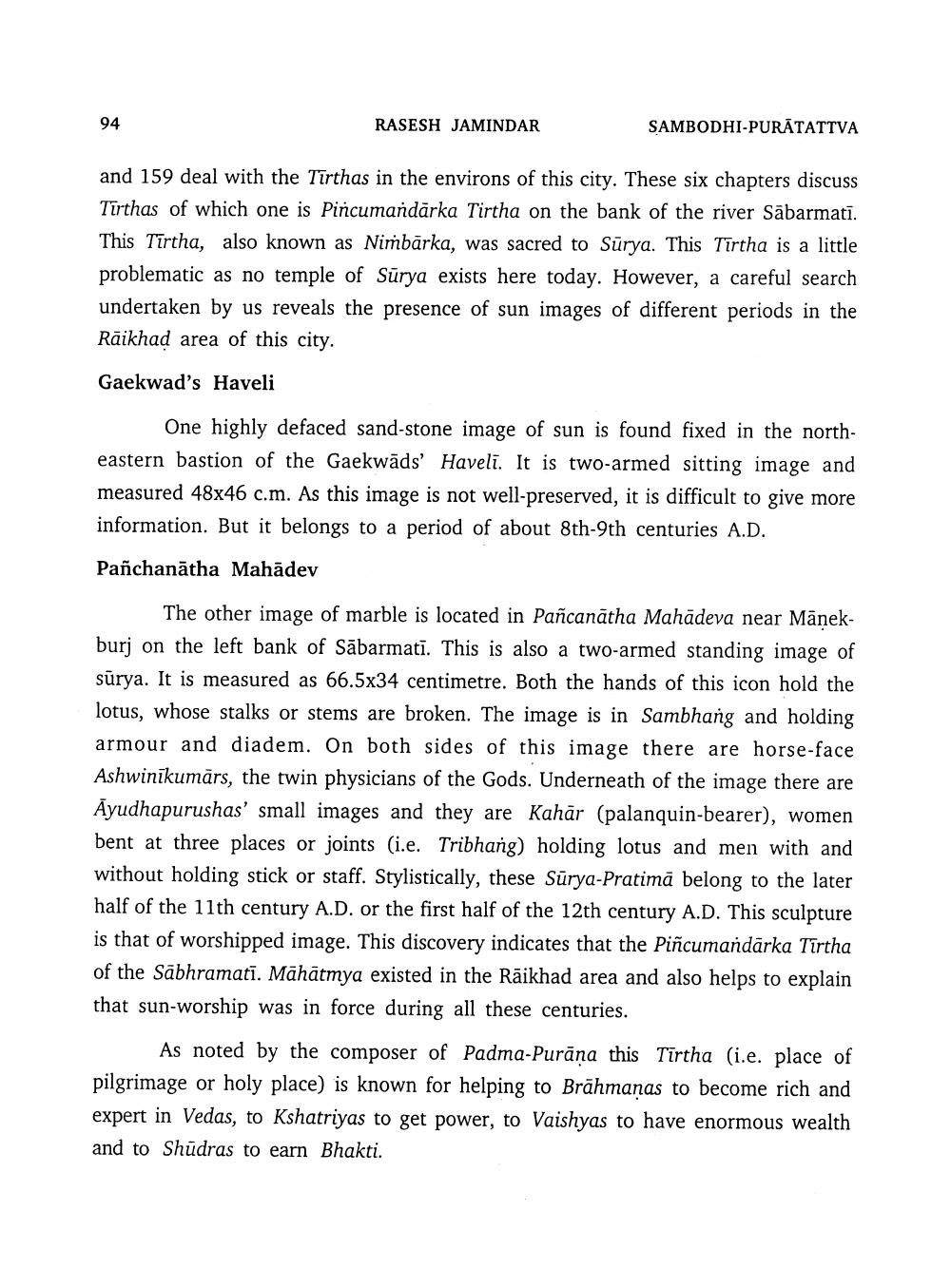________________
RASESH JAMINDAR
SAMBODHI-PURĀTATTVA
and 159 deal with the Tirthas in the environs of this city. These six chapters discuss Tirthas of which one is Pińcumandārka Tirtha on the bank of the river Sabarmati. This Tirtha, also known as Nimbārka, was sacred to Sürya. This Tirtha is a little problematic as no temple of Surya exists here today. However, a careful search undertaken by us reveals the presence of sun images of different periods in the Räikhad area of this city.
Gaekwad's Haveli
One highly defaced sand-stone image of sun is found fixed in the northeastern bastion of the Gaekwāds' Haveli. It is two-armed sitting image and measured 48x46 c.m. As this image is not well-preserved, it is difficult to give more information. But it belongs to a period of about 8th-9th centuries A.D.
Panchanātha Mahādev
The other image of marble is located in Pañcanātha Mahādeva near Mānekburj on the left bank of Sābarmatī. This is also a two-armed standing image of sūrya. It is measured as 66.5x34 centimetre. Both the hands of this icon hold the lotus, whose stalks or stems are broken. The image is in Sambhang and holding armour and diadem. On both sides of this image there are horse-face Ashwinīkumārs, the twin physicians of the Gods. Underneath of the image there are Āyudhapurushas' small images and they are Kahār (palanquin-bearer), women bent at three places or joints (i.e. Tribhang) holding lotus and men with and without holding stick or staff. Stylistically, these Sürya-Pratimā belong to the later half of the 11th century A.D. or the first half of the 12th century A.D. This sculpture is that of worshipped image. This discovery indicates that the Piñcumandārka Tirtha of the Sabhramati. Māhātmya existed in the Rāikhad area and also helps to explain that sun-worship was in force during all these centuries.
As noted by the composer of Padma-Purāna this Tirtha (i.e. place of pilgrimage or holy place) is known for helping to Brāhmanas to become rich and expert in Vedas, to Kshatriyas to get power, to Vaishyas to have enormous wealth and to Shūdras to earn Bhakti.




